Let's look at a message two years ago: "It is reported that this fall, the famous physicist Stephen Hawking, who has suffered from gradual freezing for more than half a century, will publish a memoir, frankly revealing the details of life in 71 years. It is said that this It was the first book that Hawking did not help with others and relied entirely on himself. So, how has Hawking always talked and delivered speeches with others?

It turns out that the computer installed under and behind the Hawking Wheelchair contains an audio amplifier and a voice synthesizer that are controlled by the infrared sensors on the Hawking glasses to react to changes in light caused by facial movements..."
From the above we can see that nowadays, infrared sensor technology is very mature, has been integrated into people's daily life, and plays a huge role.
Before we understand the infrared sensor, first of all, we should know what is infrared, or infrared light.
We know that light is also a kind of radiated electromagnetic wave. In human experience, it usually refers to the range of light waves visible to the naked eye from 400 nm (violet light) to 700 nm (red light) which can be felt by human eyes.
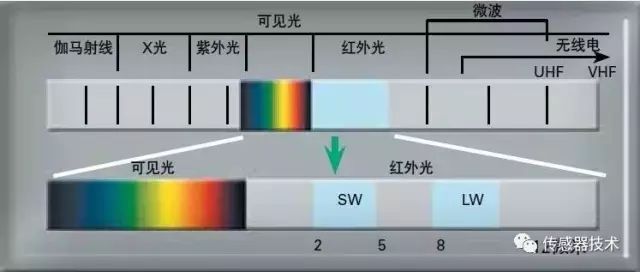
As shown in the figure, we call the radiation outside the red light and the wavelength between 760nm and 1mm as infrared light. The infrared light is invisible to the naked eye, but we can still feel it through some special optical equipment.
Infrared is a kind of light that is invisible to the human eye, so it has all the characteristics of all the light of light. But at the same time, infrared also has a very significant thermal effect. All substances above absolute zero, or -273 ° C, produce infrared light.
Therefore, simply speaking, an infrared sensor is a sensor that performs data processing using infrared rays as a medium.
Type of infrared sensor
Infrared is a kind of light that is invisible to the human eye, so it has all the characteristics of all the light of light. But at the same time, infrared also has a very significant thermal effect. All substances above absolute zero, or -273 ° C, produce infrared light.
According to different ways of sending, infrared sensors can be divided into active and passive.
Working principle and characteristics of active infrared sensor

The transmitter of the active infrared sensor emits a modulated infrared beam that is received by the infrared receiver to form a warning line of infrared beams. When encountering leaves, rain, small animals, snow, sand, and fog, it should not be alarmed. If a person or a considerable volume of objects is blocked, an alarm will occur.
Active infrared detector technology mainly adopts one-shot and one-receipt, which belongs to linear prevention. Now it has developed from the original beam to multiple beams, and it can also double-shot and double-receive, minimizing the false alarm rate, thus enhancing the stability of the product. Sex, reliability.
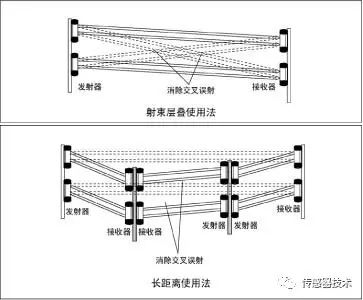
Because infrared is a non-coherent environmental factor (for sound, lightning, vibration, various types of artificial light sources and electromagnetic interference sources in the environment, with good incoherence), it is also a product with good coherence of target factors ( The alarm will only be triggered if the target of the infrared beam is blocked, so the active infrared sensor will be further promoted and applied.
The working principle and characteristics of passive infrared sensor
Passive infrared sensors work by detecting infrared rays emitted by the human body. The sensor collects infrared radiation from the outside and collects it on the infrared sensor. Infrared sensors usually use pyroelectric components, which release the charge outward when the temperature of the infrared radiation is received, and an alarm is generated after the detection process.

This sensor is aimed at detecting human radiation. Therefore, the radiation sensitive component must be very sensitive to infrared radiation having a wavelength of about 10 μm. In order to be sensitive to the infrared radiation of the human body, its radiation surface is usually covered with a special filter, so that the environmental interference is obviously controlled.

A passive infrared sensor consists of two pyroelectric elements connected in series or in parallel. Moreover, the two polarization directions are exactly opposite. The ambient background radiation has almost the same effect on the two pyroelectric elements, so that the discharge effect is mutually canceled, so that the detector has no signal output.
Once the intruder enters the detection area, the infrared radiation of the human body is focused by the partial mirror, and is received by the pyroelectric element, but the two pieces of pyroelectric elements receive different heat, and the pyroelectric power is different, which cannot be cancelled, and is processed by signal. And the alarm.
According to different energy conversion methods, infrared sensors can be divided into photon and pyroelectric.
Photon infrared sensor

Photonic infrared sensors are sensors that operate using the photon effect of infrared radiation. The so-called photon effect means that when infrared rays are incident on some semiconductor materials, the photon flux in the infrared radiation interacts with the electrons in the semiconductor material, changing the energy state of the electrons, thereby causing various electrical phenomena.
By measuring the change in the electronic properties of the semiconductor material, the intensity of the corresponding infrared radiation can be known. The photon detector types mainly include internal photodetectors, external photodetectors, free carrier detectors, and QWIP quantum well detectors.

The main characteristics of photon detectors are high sensitivity, fast response, and high response frequency, but the disadvantage is that the detection band is narrow, generally working at low temperature (to maintain high sensitivity, often using liquid nitrogen or thermoelectric cooling, etc. Cool the photon detector to a lower operating temperature).
Pyroelectric infrared sensor
The pyroelectric infrared sensor uses the thermal effect of infrared radiation to cause the temperature change of the component itself to detect certain parameters, and the detection rate and response speed are not as good as the photon sensor.
However, since it can be used at room temperature, sensitivity is independent of wavelength, so the application field is wide. The pyroelectric infrared sensor utilizing the pyroelectric effect of ferroelectric is highly sensitive and has been widely used.

Pyroelectric Effects When some insulating materials are heated, as the temperature rises, an equal number of oppositely charged charges are generated across the crystal. This phenomenon of polarization due to thermal changes is called pyroelectric effect. The pyroelectric effect has been used in pyroelectric infrared sensors for nearly a decade. A crystal that produces a pyroelectric effect is called a pyroelectric material, which is also called a pyroelectric element. Common materials for thermoelectric elements include single crystal, piezoelectric ceramics, and polymer films.
Pyroelectric infrared sensor structure Pyroelectric infrared sensor consists of the following four main parts:
1 an aluminum substrate constituting a circuit, a field effect transistor (FET);
2 a ceramic material having a pyroelectric effect;
3 window material that limits the incident infrared wavelength;
4 Housing TO-5 cap and socket.

When the detector element is used alone, there is a short detection distance and the subsequent circuit of the obtained signal is not easy to handle. Therefore, an infrared assembly is often used for detection. The infrared assembly is composed of a pyroelectric infrared sensor, a lens, a measurement conversion circuit, and a sealed package. The lens can expand the detection range and improve the sensitivity of the measurement; the measurement conversion circuit can complete the signal processing process such as filtering and amplification; the sealed tube can prevent the wrong action caused by the external noise. This type of assembly is small in size, low in cost, and versatile, so it is widely used.
Infrared sensor application
From the current application situation, the infrared sensor has the following advantages:
1. Environmental adaptability is superior to visible light, especially at night and in harsh weather;
2, good concealment, generally passive signal receiving target, more secure than radar and laser detection and confidentiality, not easy to be interfered;
3. The ability to identify camouflage targets is better than visible light due to the detection of infrared radiation characteristics caused by the temperature difference between the target and the background and the difference in emissivity;
4. Compared with the radar system, the infrared system is small in size, light in weight, and low in power consumption;
According to the above performance characteristics of the infrared sensor, we can develop a variety of infrared detectors.
Use its light effect:
1, photoconductive detector: also known as photoresistor. After the semiconductor absorbs photons with sufficient energy, some carriers in the body change from a bound state to a free state, thereby increasing the conductivity of the semiconductor. This phenomenon is called photoconductivity. The photoconductive detector made by the photoconductivity effect is divided into a polycrystalline thin film type and a single crystal type.
2, photovoltaic detectors: mainly use the photovoltaic effect of the pn junction. Infrared photons with energy greater than the forbidden band excitation electron-hole pairs in and around the junction region. The existing junction electric field causes holes to enter the p region, electrons enter the n region, and potential differences occur in the two portions, and the external circuit has a voltage or current signal. Compared with the photoconductive detector, the background detection rate of the photovoltaic detector is 40% larger, no external bias electric field and load resistance are required, no power is consumed, and high impedance is obtained.
3, light emission - Schottky barrier detector: metal and semiconductor contact, forming a Schottky barrier, infrared photons are absorbed by PtSi through the Si layer, so that the electrons get energy transition to the Fermi level, leaving holes to cross the barrier into On the Si substrate, electrons of the PtSi layer are collected to complete infrared detection.
4. Quantum Well Detector (QWIP): The two semiconductor materials are alternately grown by a thin layer of artificial methods to form a superlattice, and there is a band mutation at the interface, so that electrons and holes are confined in the low potential energy well, thereby energy. Quantumization forms quantum wells.
An infrared detector can be used by using the principle of energy level electronic transition in a quantum well. Because only the electrodeization vector perpendicular to the superlattice growth plane acts on the incident radiation, the photon utilization rate is low; the concentration of the ground state electrons in the quantum well is limited by doping, the quantum efficiency is not high; the response spectrum is narrow; the low temperature is demanding.
Use its thermal effects:
1. Liquid mercury thermometer and pneumatic Golay cell: the thermal expansion and contraction effect of the material is utilized.
2, thermocouples and thermopiles: the use of temperature gradients can produce thermoelectric effects of temperature difference electromotive force between different materials.
3, quartz resonator uncooled infrared imaging array: the use of resonant frequency temperature sensitive principle to achieve infrared detection.
4, bolometer: the use of the material's resistance or dielectric constant thermal effect - radiation caused by temperature rise to change the material resistance - used to detect thermal radiation. Because semiconductor resistors have a high temperature coefficient and are most used, temperature bolometers are often called "thermistors."
In addition, due to the appearance of high-temperature superconducting materials, superconducting detectors with steep resistance near the transition temperature have attracted attention. If room temperature superconductivity becomes a reality, it will be the most striking type of detector in the 21st century;
5. Pyroelectric detectors: Some crystals, such as triammonium sulphate and bismuth citrate, cause spontaneous polarization changes when exposed to infrared radiation, resulting in crystals perpendicular to the spontaneous polarization. A small voltage is generated between the two outer surfaces, whereby the power of the infrared radiation can be measured.
Infrared sensor applications can be broadly classified into the following categories, depending on the application function and location:
Radiation quantity, spectrum measurement
Such measuring instruments are widely used, such as ground radiation intensity meters based on mid-infrared radiation measurement, and can be used for climate change observation such as global warming; infrared space telescope based on far infrared radiation measurement, which can be used for cosmic celestial astronomical observation; The meteorological satellite of the infrared spectrum scanning radiometer can realize meteorological observation and analysis of clouds and the like. Among industrial and mining enterprises, infrared thermometers based on radiation measurement and infrared analyzers based on infrared spectrum measurement are widely used.
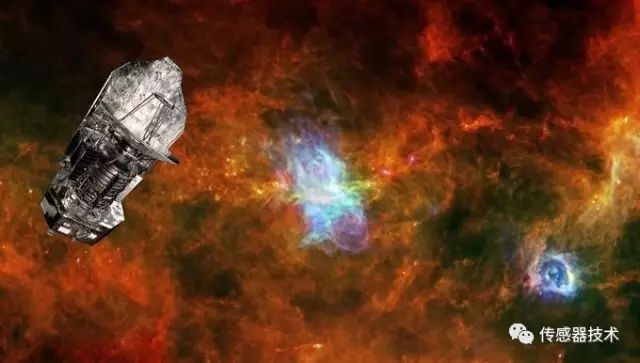
Search and tracking system
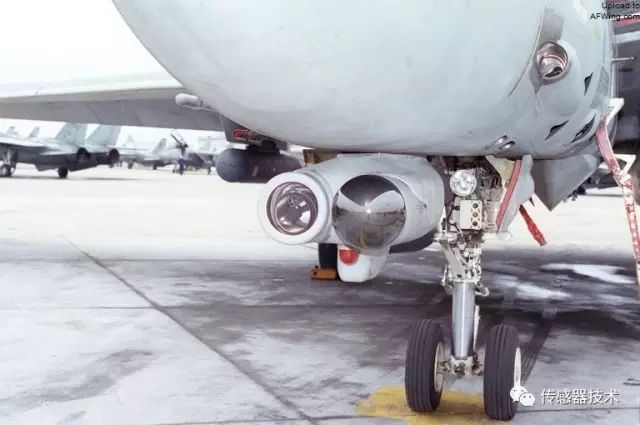
We are familiar with the near-combat air-to-air missiles carried by fighters. They use an infrared tracking system based on the electromagnetic radiation waves emitted by the target in the infrared spectrum to search and track the infrared targets, determine their spatial position, and move them. A system for tracking tracks.
The image quality of an infrared search tracker depends on the spatial resolution associated with pixel size and number of pixels. That is to say, if the number of pixels of the instrument is higher, the smaller the pixel size, the clearer the image displayed, and the farther the searchable distance is.
Sofradir, a French company based on MCT (HgCdTe) cooled infrared detector technology, recently introduced a high-performance IRST infrared search and tracking system based on 10μm image distance MWIR for use in pilots or soldiers, day or night, even In the smoke or fog environment, it can still effectively identify, distinguish and locate small targets as far as 10km.
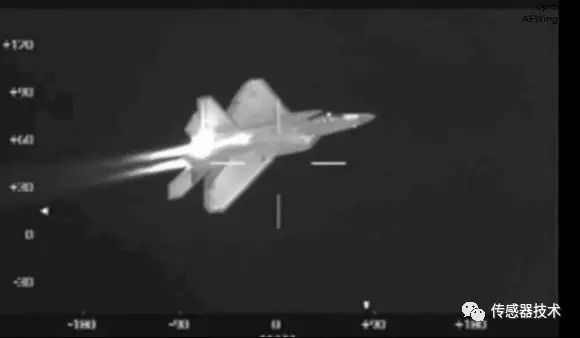
Thermal imaging system
The thermal imager uses an infrared detector and an optical imaging objective to receive the infrared radiation energy distribution pattern of the target to be reflected on the photosensitive element of the infrared detector, thereby obtaining an infrared thermal image, and the thermal distribution of the thermal image and the surface of the object. The field corresponds. In general, a thermal imager converts invisible infrared energy emitted by an object into a visible thermal image. The different colors above the thermal image represent the different temperatures of the object being measured.
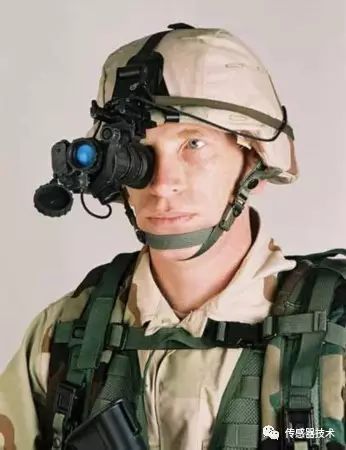
Any object with temperature will emit infrared light. The thermal imager is the infrared light emitted by the receiving object. The color image is used to display the temperature distribution of the surface of the object to be measured. According to the small difference in temperature, the abnormal point of the temperature is found. With the role of maintenance. Also commonly known as thermal imaging cameras.

Thermal imaging cameras were developed at the earliest for military purposes and have rapidly expanded into the civilian industry in recent years. Thermal imaging cameras are used in a wide range of applications, as long as there are temperature differences.
For example: in the field of construction, inspection of empty drums, defects, tile detachment, damp, heat bridge, etc.; in the field of fire protection, you can find the source of fire, determine the cause of the accident, find the injured in the smoke; the public security system can find people hiding at night; The automobile production field can detect the performance of the tire's walking performance, air-conditioning heating wire, engine, exhaust throat, etc.; medicine can detect acupuncture effects, early detection of nasopharyngeal cancer, breast cancer and other diseases; electric power inspection wires, joints, quick-closing gates, Transformer cabinets, etc.
Infrared communication system
It is a system that uses modulated infrared radiation beam to transmit encoded data, and then converts the received infrared radiation signal into an electrical signal by a silicon photodiode to realize short-range communication. It has the advantages of not interfering with the normal operation of other neighboring devices, and is particularly suitable for indoor communication in a high-density area. In addition, the communication system is characterized by low power consumption, low cost, and safety.

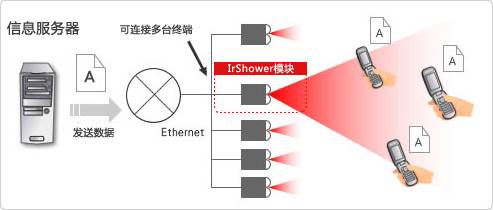
other
Infrared sensing technology is also widely used in access control alarm and control, lighting control, fire detection, toxic and harmful gas leak detection, infrared ranging, heating and ventilation and other comprehensive applications. At the "SENSOR+TEST" exhibition in Nuremberg, Germany, the French company ULIS exhibited its latest development and adopted the latest on-chip innovation technology (such as using I2C standard interface, low power management, etc.) Infrared thermal sensor array Micro80P products.
The sensor array is based on amorphous silicon technology with high reliability and sensitivity up to 80×80 image distance. Its performance far exceeds the single-element or four-element thermal sensor used in current motion detectors, greatly improving the industry. The ability of a class of infrared thermal detection sensors.
This product can be used not only to detect temperature points or temperature surfaces and to detect motion, but also to count, locate and classify targets or human activities. For example, in the case of HVAC, it can be used to count the people in the room and measure the temperature of the room wall to automatically fine-tune the indoor heating and air-conditioning system to achieve the maximum energy saving and consumption reduction of the building.

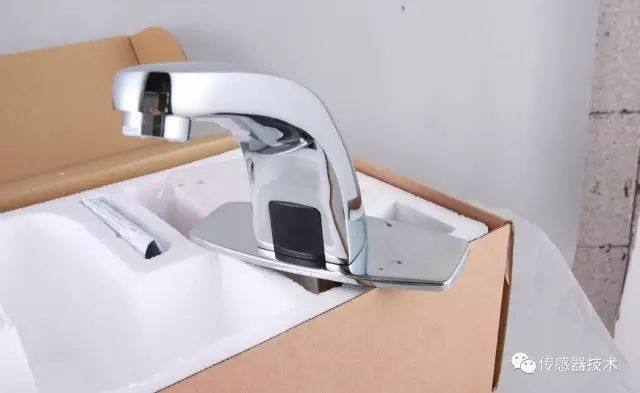
Development of infrared sensors
With the improvement of science and technology, the development of computer microprocessor technology, the improvement of modern digital signal processing technology, the introduction of new semiconductor materials and the advancement of processing technology, infrared sensors have developed rapidly in recent years. According to a foreign research institute, global sales of infrared sensors will increase from $152 million in 2010 to $286 million in 2016.
In recent years, the development trend of infrared sensors is mainly reflected in the following four aspects:
First, the use of new materials and processing technology, the sensor's infrared detection rate is increased, response wavelength is increased, response time is shortened, pixel sensitivity and pixel density are higher, anti-interference performance is improved, and production cost is reduced. For example, Pyroos and Irisys have introduced a new pyroelectric sensitive technology that combines thin films and ceramics to enable the array of sensitive components.
The second is the large-scale and multi-functional sensor. With the development of microelectronics technology and the expanding application field of sensors, infrared sensors are developing from small, single functions to large-scale and multi-functional.
Large infrared sensors (16×16 to 64×64 pixels) developed by foreign countries can also be used for temperature field measurement, and can also obtain human body detection functions that are not available in advanced and small infrared sensors (ie, precise positioning of individuals in space) The location in the location, even if people are not active, can be identified) or large-area security monitoring and other functions, is very suitable for home automation, health care, security protection and other applications.
In addition, the development of new multi-spectral sensors has greatly improved the functionality of infrared imaging arrays.
The third is the intelligence of the sensor. The new intelligent infrared sensor usually has multiple microprocessors, advanced digital signal processing or compensation functions such as Fourier transform and wavelet transform, self-diagnosis function, two-way digital communication and other functions, which make the stability, reliability and reliability of the sensor. The performance of noise ratio and convenience is greatly improved.
Fourth, the sensor is further miniaturized and integrated. Using on-chip integration technology (including blind element replacement, non-uniformity correction, partial image processing functions, etc.) and other new device structures and new manufacturing process technologies, in MEMS (Micro Electro Mechanical Systems), and even nanotechnology-based NEMS (Nano) Driven by electromechanical systems, the size of infrared sensors is greatly reduced, power consumption is greatly reduced, and integration is significantly improved.
Due to the superior performance of infrared sensors, many mainstream instrument research units and manufacturers are investing more and more in its research and development.
RCA Cables can be used to connect a variety of audio and video devices, such as camcorders, to TVs or stereos to speakers. Most high-end camcorders have all three RCA jacks, so the signal entering or leaving the device goes through three separate channels-one video and two audio-resulting in a high-quality transfer. Lower-end camcorders usually have only one jack, called a stereo jack, which combines all three channels. This results in lower-quality transfers because the signal is compressed. In either case, RCA cables transmit analog, or non-digital, signals. Because of this, they cannot be plugged directly into a computer or other digital device. RCA cables connect amplifiers to all sorts of devices.
Ucoax OEM Cable Assembly RCA Cables
Quality of RCA Cables
Several factors affect the quality, price, and performance of RCA cables:
Materials: The connectors on RCA cables are often gold, silver, or copper. As you might expect, the gold connectors are the most expensive. They're also better than silver and copper connectors at preventing oxidation, but not as good at electrical conductivity. The silver connectors are best for electrical conductivity with the copper cables coming in a close second and the gold cables falling far behind. Other suitable materials are nickel, zinc, and tin.
Cable Length: Cable length has a negative effect on signal quality. Buy a cable that is only as long as you need it to make the connection for the best signal quality.
Shielding: A well-shielded cable delivers a better signal than one that lacks robust shielding.
The other end of the cable: If possible, match the material used in the other end of the cable to the material used in the connectors. Don't match tin with gold or silver with gold. Those combinations can cause problems because of an electrolytic reaction.
High Quality RCA Cables, Male to Male RCA Cable, RCA Cables for HDTV
UCOAX , https://www.ucoax.com